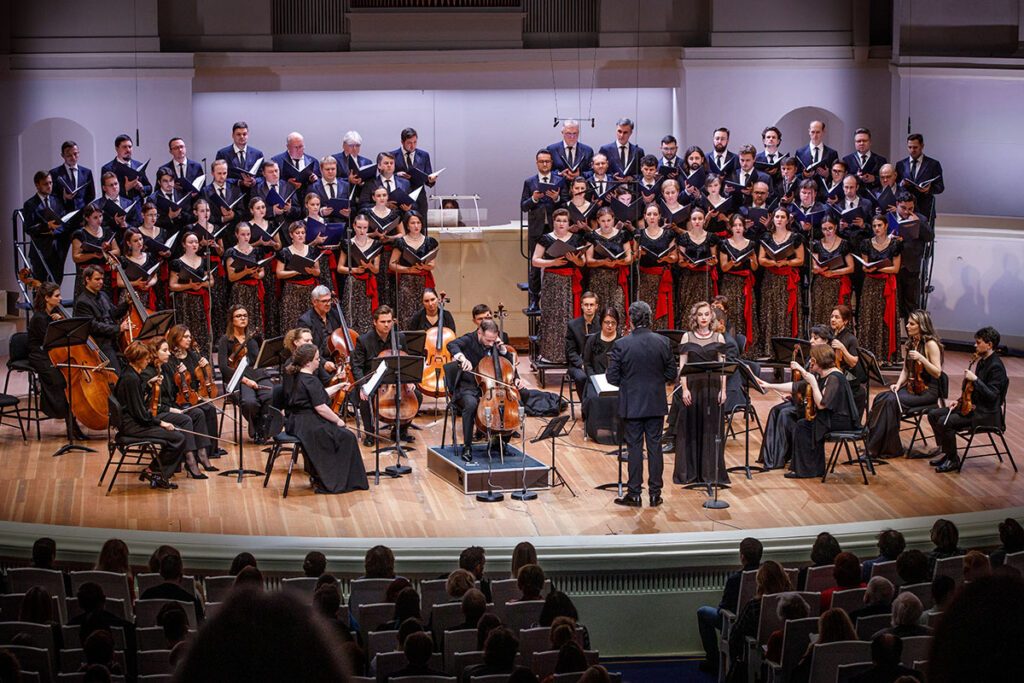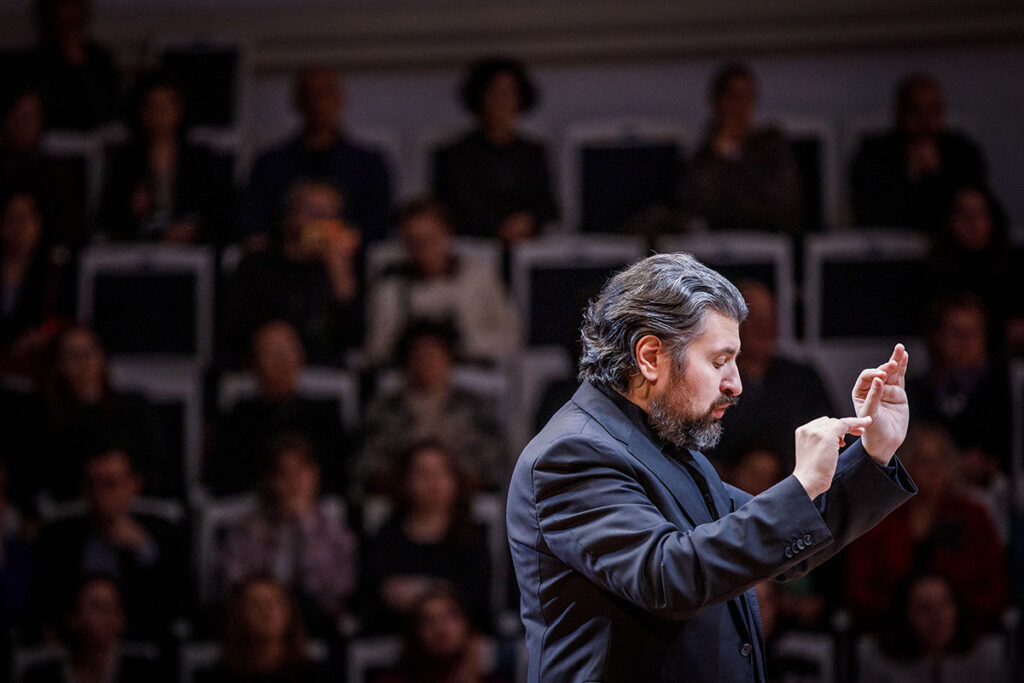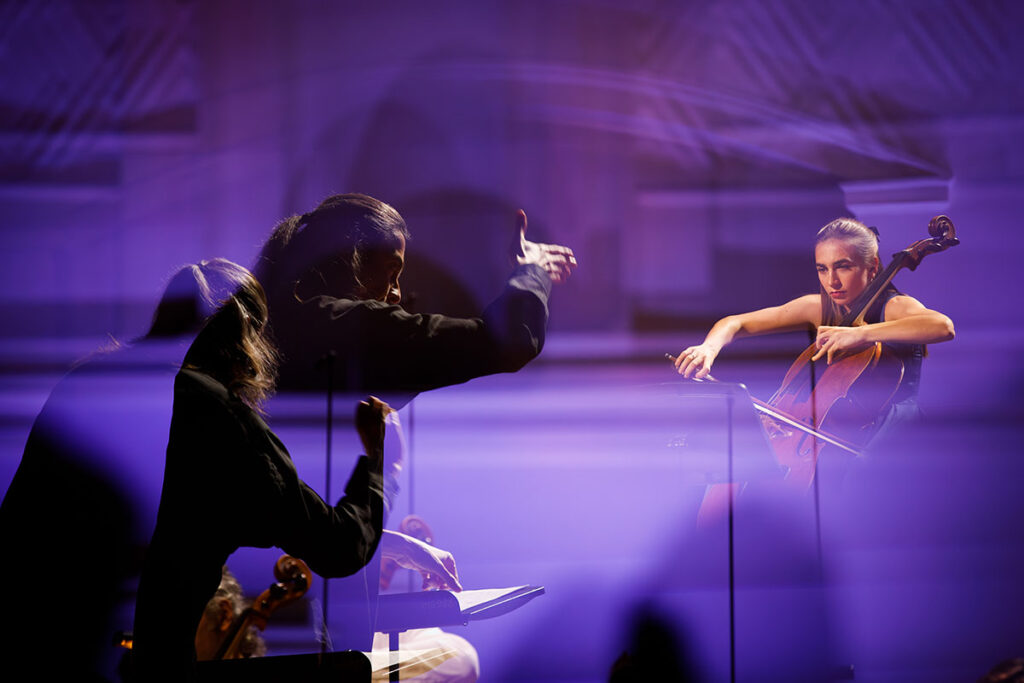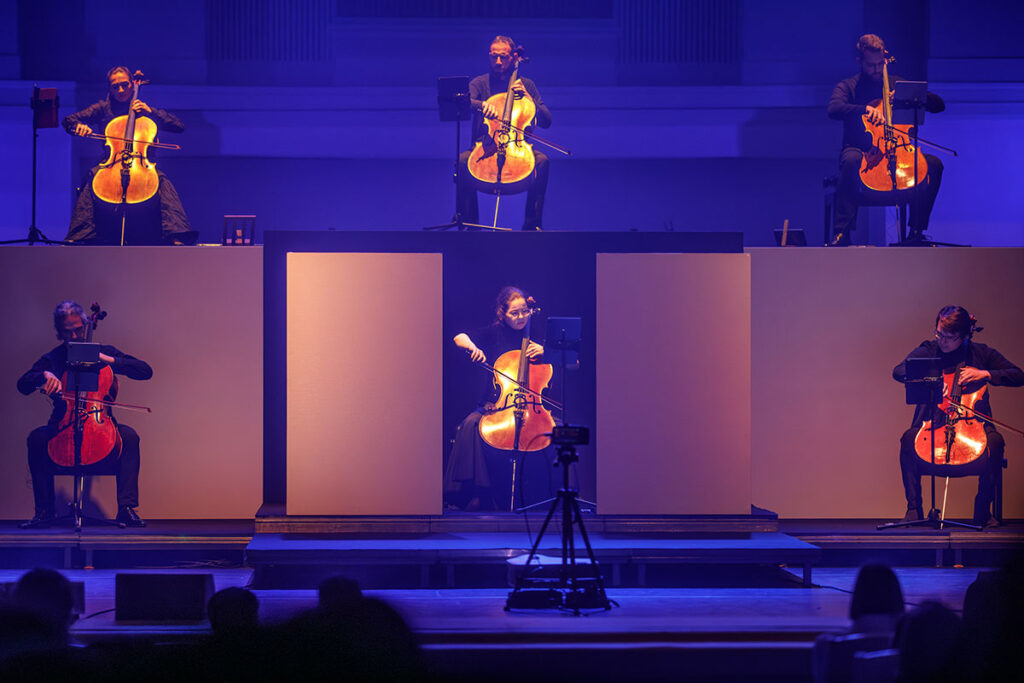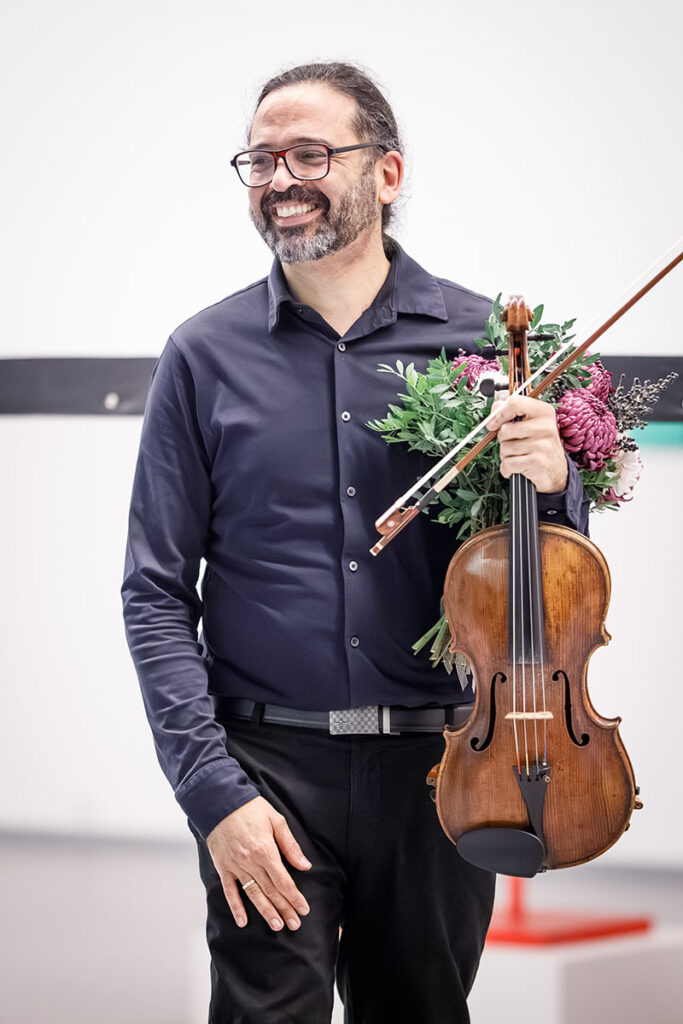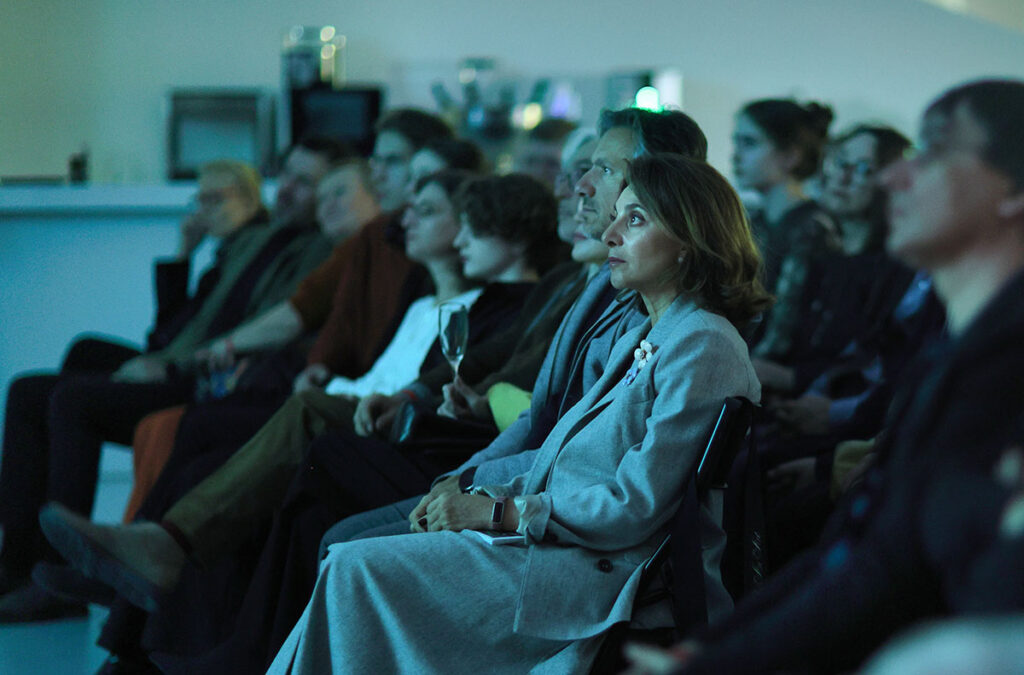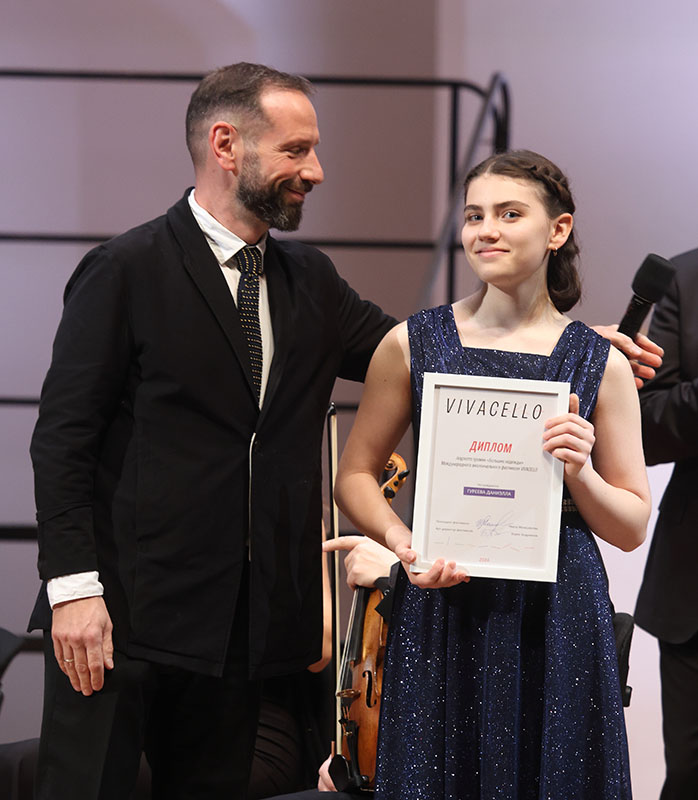
A year ago, when the VIVACELLO Cello Festival celebrated its 15th anniversary, its organisers reflected on how beautiful this age is. That it is not only a milestone of self-determination, of rejection of authority, of rebellion and searching, but also a time of great hope for a long interesting life.
In the film prepared for the semicircular anniversary of the festival, Tamaz Manasherov, the founder of the U-Art Foundation, said, as if looking into the near future: “I would like the festival to open with hope and close with hope. Because the festival from the inside is like life itself. It goes on and on, and you realise that within it there may be different processes, difficulties, problems, searches, but of course there must be hope that there is a continuation.”
The words of the patron of the arts, thanks to whom (and his wife Iveta Manasherova, president of VIVACELLO) the project lives and flourishes, became prophetic. Boris Andrianov, art director of the festival, named hope as the theme of the 16th edition in 2024. The topic suddenly presented itself – as a result of a coincidence of circumstances (discussed below). But it is all the more important to realise how responsive providence is to our thoughts, responds and helps us to realise our dreams and ideas.
The opening and closing of VIVACELLO took place on the stage of the Tchaikovsky Hall. In his welcome address to the participants and guests of the festival Boris Andrianov wrote: “We will begin and end our musical message with a reminder of the most important and eternal thing – the meaning of existence.The theme of the sixteenth festival is hope.It is in keeping with the title of the premiere piece, our prize for young cellists – and more.Hope is something that lives in us always, fuelling us, encouraging us and giving us dreams.It’s the light and warmth of tomorrow.”
The prize for young musicians was awarded at the festival for the fourth time – in memory of 18-year-old cellist Ekaterina Titova, who tragically died in 2018. Recalling Grilpalzer’s famous lines on Schubert’s grave (“Music buried here a beautiful treasure, but even more beautiful hopes”), the prize was named “Great Expectations”. This year’s laureate was Daniella Gureeva, a student of the Gnesinskaya School, who after the award ceremony performed Fauré’s Elegy with the Moscow Chamber Orchestra Musica Viva under Dmitry Jurowski.
By the way, Dmitry Jurowski – not only a sought-after conductor, head of theatres in Novosibirsk and Krasnoyarsk, but also a certified cellist – for the second time in the history of VIVACELLO did not refuse himself the pleasure of taking up the instrument. And took part in the world premiere of Osvaldo Golikhov’s play Esperanza (Hope), written especially for the festival at the request of Boris Andrianov. Golikhov reworked his own love theme from Francis Ford Coppola’s film Megalopolis for cello ensemble, trying to convey “both nostalgia for a vanished world and hope for a new, better world.”
For the second time in the history of VIVACELLO, Dmitri Jurowski did not deny himself the pleasure of taking up the instrument.And took part in the world premiere of Osvaldo Golikhov’s play Esperanza (Hope), written especially for the festival at the request of Boris Andrianov
Boris Andrianov and Dmitri Jurowski are joined in the ensemble by Miriam Prandi, Alexander Ramm and Mikael Samsonov. Each of them shone at the opening and in the role of a soloist – in works by Haydn, Arensky and the Finnish classical contemporary Aulis Salinen, who managed to fuse the images of the two legendary Spaniards in the grotesque composition The Night Dances of Don Juan Quixote.
Continuing the Spanish theme, Boris Andrianov chose for his recital a rarity – a work by Anton García Abril, a Spanish composer who passed away just three years ago. His Cántico de la “Pietá” (Canticle on the “Lamentation of Christ”) for soprano, organ, cello, mixed choir and string orchestra was inspired by Michelangelo’s famous sculpture of the dead Jesus Christ writhing in the lap of the grieving Virgin Mary. And even those not familiar with the Spanish language could understand from the word Esperanza repeatedly heard in the soprano’s part (Victoria Gladkova, soloist of the A. A. Yurlova Choir Chapel) that along with the image of grief, the image of hope was extremely important for the composer and author of Antonio Gala’s words.
Aspiring to “the light and warmth of tomorrow”, the first festival concert ended without fanfare – with a slowly fading sound. And it was such an apotheosis of slow music, a deep reflection on spiritual postulates, that the final evening of the festival, which featured only two works that were connected to each other, also became such an apotheosis. And if VIVACELLO-2024 opened with the music of Joseph Haydn – the Second Cello Concerto – it also ended with Haydn’s music. Seven cellists (Boris Andrianov, Alexei Zhilin, Maria Zaitseva, Anna Koshkina, Mikael Samsonov, Sergei Slovachevsky and Polina Tkhai) alternated as soloists, performing with the Questa Musica Ensemble conducted by Philip Chizhevsky the Haydn’s “Seven Last Words of the Saviour on the Cross” in Vladimir Tonkha’s version.
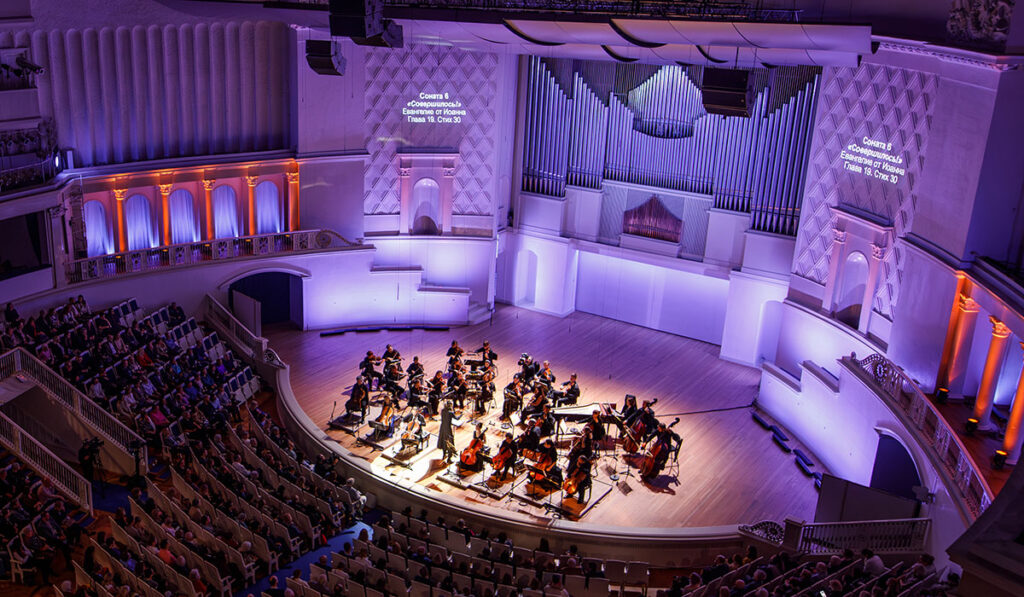
And this majestic opus was preceded by another world premiere – a piece by our contemporary, Moscow composer Alexei Sysoyev entitled Elegiac Offerings to the music of Joseph Haydn, inspired, according to the author, by the aforementioned work by the eldest of the great Viennese classics. Programme host Yaroslav Timofeev stressed that both works – by Haydn and Syssoyev – are endowed with the ability to change the perception of astronomical time, to stop it, to immerse the listener in biblical times – without beginning and end. The musicologist called Sysoyev’s piece an “alternative finale” to Haydn’s work: in the latter’s seven sonatas (the “chambers of the mind”) the musical narrative ends with an all-destroying earthquake (in accordance with the Gospel story), while Sysoyev, creating light, almost ethereal music, brings us back to the theme of resurrection and the theme of hope – as the last value of a mortal being. “Where hope dies, there is emptiness,” said Leonardo da Vinci.
There, in the Tchaikovsky Hall, the most daring performance in the history of the festival took place, which became a real challenge for many Philharmonic guests. The Centre for Electroacoustic Music of the Moscow Conservatory initiated the multimedia programme “String Theory”, named after one of the works performed (by CEAM’s head Nikolai Titov) and one of the branches of theoretical physics. He combined the sound of the cello with the electronic sound, the audible with the visible, providing the audience with a significant sensory experience.
The Tchaikovsky Hall hosted the most daring performance in the festival’s history, which became a real challenge for many Philharmonic guests.The Centre for Electroacoustic Music of the Moscow Conservatory initiated the multimedia programme String Theory.He combined the sound of the cello with an electronic sound, the audible with the visible, treating the audience to a significant sensory experience
Works by contemporary authors from all over the world were performed. The cello was played in the traditional way and “dissected” on the table. The Tchaikovsky Hall hosted the most daring performance in the history of the festival, which became a real challenge for many Philharmonic guests.The Centre for Electroacoustic Music of the Moscow Conservatory initiated the multimedia programme String Theory.He combined the sound of the cello with the electronic sound, the audible with the visible, treating the audience to a considerable sensory load of their synthesised ones. It was shown in real life and animated, served against a background of landscape and ticker tape, generously accompanied by plays of light. Taken together, the miniatures could appear equally uncomfortable to the untrained ear, although the level of “unsoundness” varied noticeably.
The key to understanding the concept of the programme was the commentary text voiced by the artificial intelligence, in which the phrase “The virtual cellist is watching you” sounded as a refrain. Boris Andrianov, who spent the entire programme on stage wearing VR-glasses, served as a living illustration. The programme, which caused a flurry of the most polar opinions among the audience, will definitely go down in the history of VIVACELLO as one of the most radical and controversial projects that left no one indifferent. And for cellists Boris Andrianov, Maria Zaitseva, Anna Koshkina, Alexander Ramm, Mikael Samsonov and Vasily Stepanov, it was an enriching experience shared with them by Yulia Migunova and Olga Demina, who are more used to CEAM projects and ensembles performing contemporary music.
The concert of the winner of the XIV International Tchaikovsky Competition, Honoured Artist of Armenia Narek Hakhnazaryan at the “Rassvet” Cultural Centre was a light and joyful intermezzo in the programme of the VIVACELLO Festival in 2024. In duet with pianist Yakov Katsnelson (who is known as a skilful master of chamber music and a sensitive and attentive accompanist) he performed masterpieces by German classical Romantics (Schumann and Mendelssohn), as well as works by 20th century composers (Harutyunyan, Baghdasaryan, Tsintsadze and Piazzolla) who embodied national musical traditions in their work.
For the first time at this year’s festival, there was a film screening.The Multimedia Art Museum showed the cult film “The Cabinet of Dr Caligari” from the silent film era with live sound accompaniment – new music by Israeli composer Yuval Gotlibovich
Finally, for the first time at this year’s festival, there was a film screening. The Multimedia Art Museum showed the cult film “The Cabinet of Dr Caligari” from the silent film era with live sound accompaniment – new music by Israeli composer Yuval Gotlibovich. The author himself (an internationally renowned violist, professor at the Conservatory of the Italian Swiss Conservatory in Lugano and the Escuela Superior de Musica de Catalunya in Barcelona) came to Moscow to present his work for the first time in Russia. He is joined by Boris Andrianov. Despite the fact that Robert Vinet’s picture is the first horror film in history, the fear in the audience clearly gave way to artistic curiosity, especially since mankind has come a long way in more than a hundred years, changing its attitude to many aesthetic (and some ethical) categories. And even though the political subtext, laid down by the film’s creators, is no longer read by the modern viewer so acutely, the film leaves a huge space for reflection, in which there is a place for hope.
Text: Tatiana Davydova
Photo:Ivan Novikov-Dvinsky, Denis Kuznetsov

